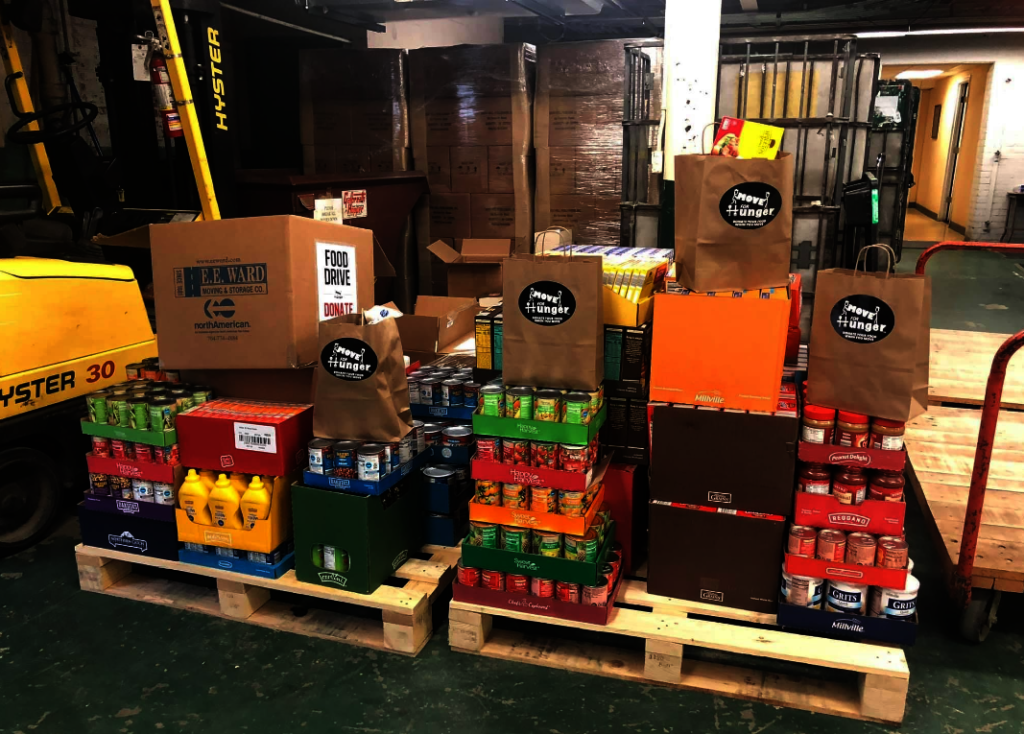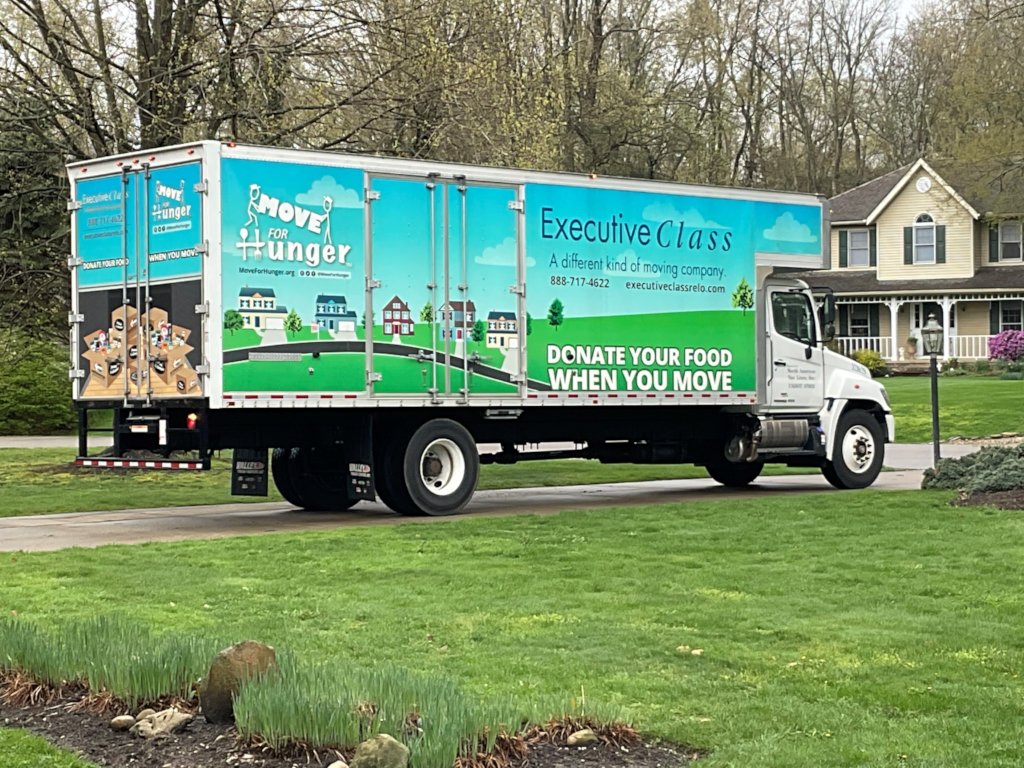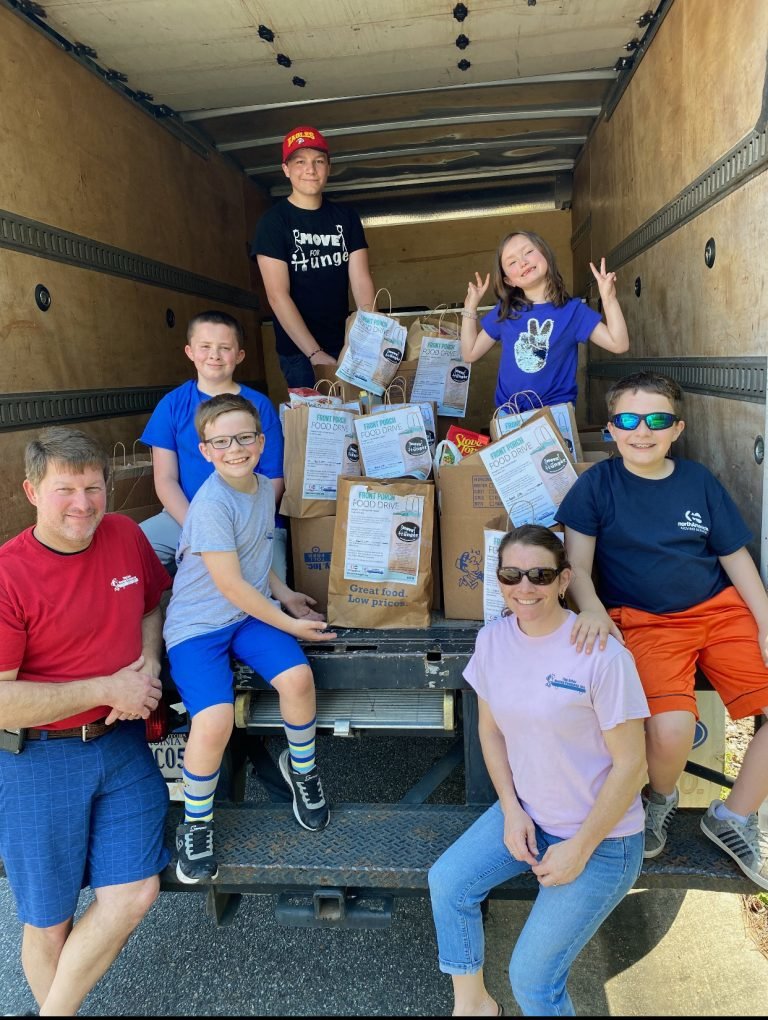By Adam Lowy | Executive Director & Founder
There’s no way around it, 2020 was a rough year for everyone. But throughout it all, Move For Hunger continues to be amazed by the resilience and generosity of our network time and time again that donated more food, time, resources, and charitable donations as we fight to end hunger together.
Last year was a record year for us in terms of our impact - over 5 million pounds of food (4 million meals) transported to food banks and pantries across the United States and Canada.
That momentum built up last year has carried right over to 2021, and we’re on pace to provide more meals than ever.
Through the first 6 months of the year, our network has transported nearly 2.2 million pounds of food (1.8 million meals). That’s a 47% increase over the same period during last year’s record-breaking year.
2021 Highlights So Far
We’ve had numerous transportation partners step up in a major way and routinely deliver food, most notably Just-In Time Moving & Storage out of Arizona (over 700,000 lbs moved), Apex Moving + Storage (over 500,000 lbs moved), and Gentle Giant Moving Company - Somerville (nearly 400,000 lbs moved), along with many many others.
Last year when COVID pushed everything virtual, we adapted quickly to host a few select virtual events. So far this year, we’ve expanded our lineup to include anything from virtual karaoke and wine tastings to trivia and active challenges. Back in February, Love + Relo, the daily podcast for the relocation industry from our friend Ben Cross, hosted the ‘Turn Up The Love for Relo: Karaoke Event 2021’ to benefit Move For Hunger. Our very own Adam Lowy participated (sadly we don’t have the footage) and the event raised enough money to provide over 34,000 meals.
In April, we partnered with CarsArrive Auto Relocation for our first virtual wine tasting, Sip with Move For Hunger. This fundraiser, which collected enough donations for 13,000 meals, and wine tasting was in collaboration with the Madrigal Family Winery in Napa, California. Since we couldn’t get enough of our virtual events, we decided to host a monthly virtual trivia night that’s open to the public. In the first 3 iterations, the participants’ donations have provided over 2,000 meals.
Most recently, Assurant held their second annual ‘Turning Miles into Meals Challenge’. During the month of May, 2,200 employees logged over 128,000 miles doing a variety of activities like walking, running, biking, yoga, etc. which provided more than 320,000 meals.
We thought this was such a great idea, we decided to host our own version that was open to the public, the Move 2 Fight Hunger Challenge presented by Cars Arrive Auto Relocation. We had almost 300 participants take part in the June event, and between everybody, the group logged over 5,000 activities to provide more than 50,000 meals.
Fortunately, not everything has gone virtual. We’re happy to report that virtual and in-person food drives remain popular, and we are working hard to grow these nationally. The Spread the Love Campaign, which takes place during February, encourages Move For Hunger’s communities to donate peanut butter and jelly. Over 300 food drives throughout the United States, including those by the Women of Purpose of Maple Springs Baptist Church and Youth & Young Ministry, Quicken Loans, Sterling Corporation, Pillar Properties, the Village Green Property Management company, and Windsor Communities. All of the food drives combined to collect more than 26,000 pounds! This helps fight hunger because food drives often request long-lasting peanut butter, which is full of protein, and many kids love it. Thus, this is a simple way to help end childhood hunger.
Another national campaign was the Great northAmerican Food Drive. From April 5 to April 11, 32 northAmerican Van Line agents collected nearly 26,000 pounds of food (21,500 meals) and took place in 18 states as well as Canada.
One more major storyline from the year so far is that our Multi-Family network is back in a big way! They’ve been hosting more food drives than ever, collecting more food than ever, and joining Move For Hunger at a record pace. We’ve increased the number of properties we work from 1,200 all the way up to 1,800 properties and counting.
This help and resources are still very much needed. While it appears the pandemic is nearly over, we’re far from recovering from its impact. 42 million Americans (1 in 8) are food insecure including 13 million kids. All the while, 35% of the food (160 million pounds) in the United States goes either unsold or uneaten.
What’s Next
We’re never ones to sit idly by while there are a lot of people that need our help. Hunger Action Month in September is right around the corner and our team is working hard on ways you can continue to support Move For Hunger and our mission.
For over a decade we’ve been all about non-perishable food for obvious reasons, but there is a need for fresh food and we have a few exciting projects in the works that will help us provide it. We don’t want to spoil the announcement so stay tuned in the upcoming months ahead.
With all of the success in the first half of the year, the busy months are ahead. Our most popular food drives and events like the Thanksgiving Food Drive and GivingTuesday are all around the upcoming holidays. We hope the momentum continues all through the year, and we can continue to provide more and more people the food they need. We thank you for your support this year and every year, and let’s keep 2021 going!
By Adam Lowy | Executive Director & Founder
By Adam Lowy | Executive Director & Founder
Project reports on GlobalGiving are posted directly to globalgiving.org by Project Leaders as they are completed, generally every 3-4 months. To protect the integrity of these documents, GlobalGiving does not alter them; therefore you may find some language or formatting issues.
If you donate to this project or have donated to this project, you can receive an email when this project posts a report. You can also subscribe for reports without donating.
Support this important cause by creating a personalized fundraising page.
Start a Fundraiser


